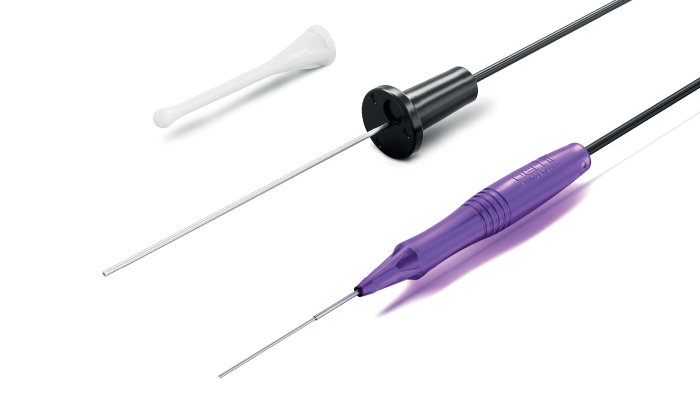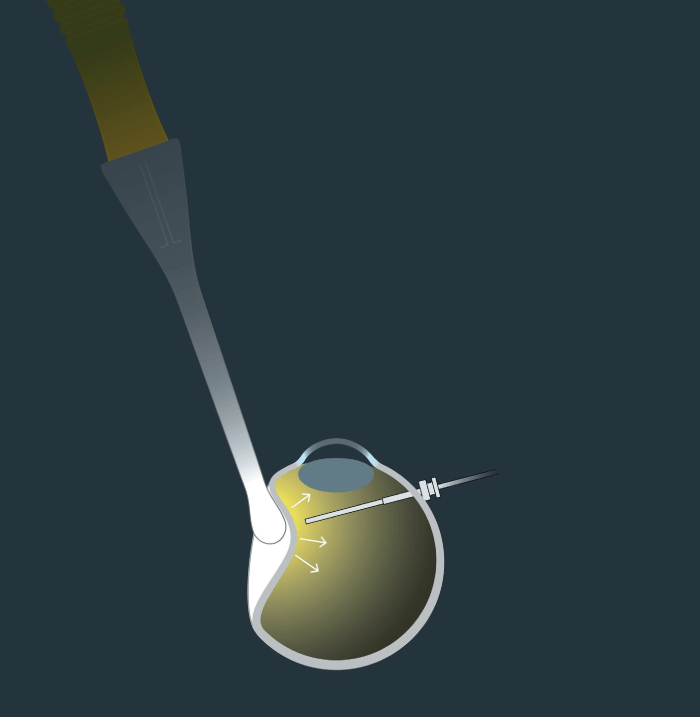 ViPer fits on all endo illuminators from Oertli
ViPer fits on all endo illuminators from Oertli
Among some of the latest product innovations in the field of retinal surgery is a small piece of plastic called ViPer – a term that stems from “visible periphery.” Though perhaps surprising, this petite part has greatly improved the speed and efficiency of my surgical procedures.
Anyone who has performed vitreoretinal surgery will know that, without any assistance during indenting, the procedure can take twice as long and there is a higher risk of complications. There are other routes you can go down when an assistant is not an option, such as indenting from the outside with a strabismus hook and looking through the microscope without BIOM, but these require the patient to be pseudophakic – and the procedure is often painful. The Chandelier system is a great alternative, but having a cable hanging from your eye isn’t that pleasant either. So with the intention of overcoming my own low staffing levels – and after a failed homemade attempt of engineering a solution – I teamed up with Oertli to create the first illuminated scleral indentor.
By enabling simultaneous indentation and transcleral illumination, ViPer simplifies work in the periphery and makes retinal surgery more efficient. It is made from extremely strong and durable plastic and the front end is finely rounded into a ball to facilitate indenting. On top of this, the pinpoint radiation of light means you get a very homogenous illumination of the eye. In fact, there is only a 10 percent loss of light compared with a standard endo-light.
The ViPer is extremely easy to use – there is no learning curve; it simply clicks on to the endo-illuminator from Oertli and is ready to use right away, speeding up your surgery massively. You simply approach the eye with the ViPer on the sclera, and you can see the vitreous base very clearly. I recommend injecting triamcinolone to ensure you get the best results.
How easy buckling is done with ViPer
More than just an illuminated scleral indentor, ViPer has many applications. I’ve found ViPer useful in retinal detachment cases by better displaying any small defects. It can also be used in cataract surgery in the case of a capsule rupture as it allows an intraocular fundus view when there is no endo-light. And it can be used during scleral buckling. Usually quite a cumbersome procedure, I’ve taken to calling scleral buckling with the ViPer “easy buckle” because you eliminate the need for a head ophthalmoscope and can locate and mark the right position for the buckle on your own by coloring the ViPer.
All these benefits may sound trivial, but they are not. With ViPer you can perform surgery much more efficiently, as you have everything you need right in your own hands. You don’t need to keep directing an assistant, and you don’t need to worry whether they will navigate around the eye properly. The ViPer is the only illuminated scleral indentor developed for this purpose. And I wouldn’t want to be without it for my vitreoretinal surgeries.
 ViPer – indenting and transscleral illumination in one
ViPer – indenting and transscleral illumination in one
Explore ViPer in 90 seconds
